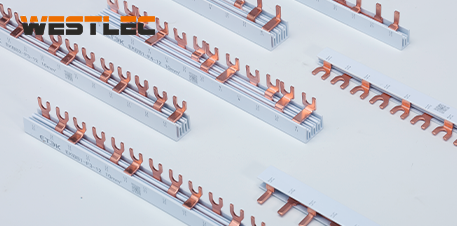A neutral busbar (or neutral bar) is an essential part of electrical panels and distribution systems, providing a common connection point for neutral wires from multiple circuits. It ensures a safe return path for current back to the power source, maintaining system stability and preventing electrical hazards.
Key Features of Neutral Busbars
-
Centralized Neutral Connection – Consolidates all neutral wires into a single, grounded point for efficient current return.
-
Grounding Integration – Often bonded to the grounding system to enhance safety and prevent voltage fluctuations.
-
Material & Construction – Typically made of conductive metals like copper or tinned aluminum for optimal conductivity and corrosion resistance.
-
Insulated or Non-Insulated Design – Some busbars are insulated to prevent accidental contact, while others are mounted directly onto grounded panels.
Applications
-
Residential & Commercial Electrical Panels – Distributes neutral connections for lighting, outlets, and appliances.
-
Industrial Switchgear & Control Panels – Ensures balanced current return in three-phase systems.
-
Renewable Energy Systems – Used in solar inverters and battery storage for proper neutral grounding.
Importance in Electrical Safety
✔ Prevents Electrical Shocks – Proper neutral-ground bonding reduces stray voltages.
✔ Ensures Circuit Stability – Maintains voltage balance in AC systems.
✔ Facilitates Fault Detection – Helps ground-fault circuit interrupters (GFCIs) and other protective devices operate correctly.


